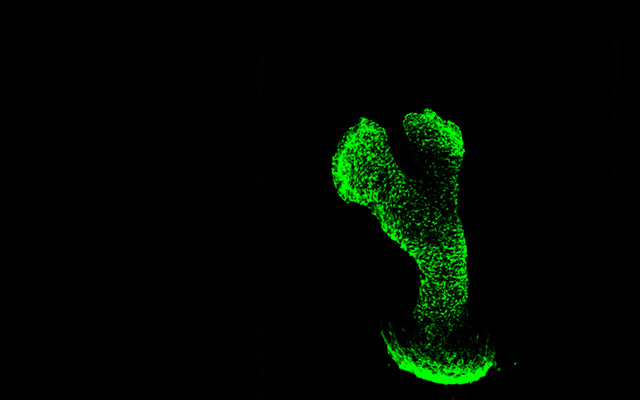Impacts of Formononetin on the Proliferation, Invasion, and Apoptosis of Oral Squamous Cell Carcinoma Cell SCC-25 by Regulating RhoA/ROCK Signaling Pathway
LI Haoyang, WANG Zhe, MAO Furong, YAN Chengxi*
This study aims to discuss the impacts of formononetin on the proliferation, invasion, and apoptosis of OSCC (oral squamous cell carcinoma) cells by regulating RhoA/ROCK signaling pathway. After intervention of the human OSCC cell line SCC-25 with different concentrations of formononetin, CCK-8 experiments were performed to screen for the optimal intervention concentration of formononetin. SCC-25 cells were randomly assigned into normal group, formononetin group, formononetin+pcDNA group, and formononetin+pcDNA-RhoA group. After grouping and intervention with formononetin, empty vector plasmids and RhoA overexpression plasmids, Western blot experiments were performed to detect the RhoA/ROCK signaling pathway related proteins in each group. CCK-8 and clone formation experiments were conducted to detect cell proliferation in each group. Flow cytometry experiments were conducted to detect apoptosis of SCC-25 cells in each group. Transwell and Western blot experiments were conducted to detect the invasion and EMT (epithelial-mesenchymal transition) related proteins in each group. OSCC transplanted tumor nude mice were prepared by subcutaneous inoculation of SCC-25 cells, and were grouped using the same method and intervened with formononetin, empty vector, and RhoA overexpression plasmids, and the mass and volume of transplanted tumors in nude mice were measured in each group. Western blot experiments were conducted to detect the EMT and RhoA/ROCK signaling pathway related proteins in transplanted tumors of nude mice in each group. Compared with the normal group, the cell viability, colony formation number, number of cell invasions, tumor mass and volume of transplanted tumors, RhoA, ROCK1,ROCK2, N-cadherin, and Vimentin protein expression levels in the formononetin group and formononetin+pcDNA group were lower (P<0.05), while the cell apoptosis rate and E-cadherin protein expression level were higher (P<0.05). Compared with the formononetin group, the cell viability, colony formation number, number of cell invasions, tumor mass and volume of transplanted tumors, RhoA, ROCK1, ROCK2, N-cadherin, and Vimentin protein expression levels in the formononetin+pcDNA-RhoA group were higher (P<0.05), while the cell apoptosis rate and E-cadherin protein expression level were lower (P<0.05); there were no great changes in the indicators of the formononetin+pcDNA group (P>0.05). Formononetin can inhibit the activation of RhoA/ROCK signaling pathway, thereby hindering the proliferation, EMT, and invasion of OSCC cells, and promoting their apoptosis.




 CN
CN EN
EN